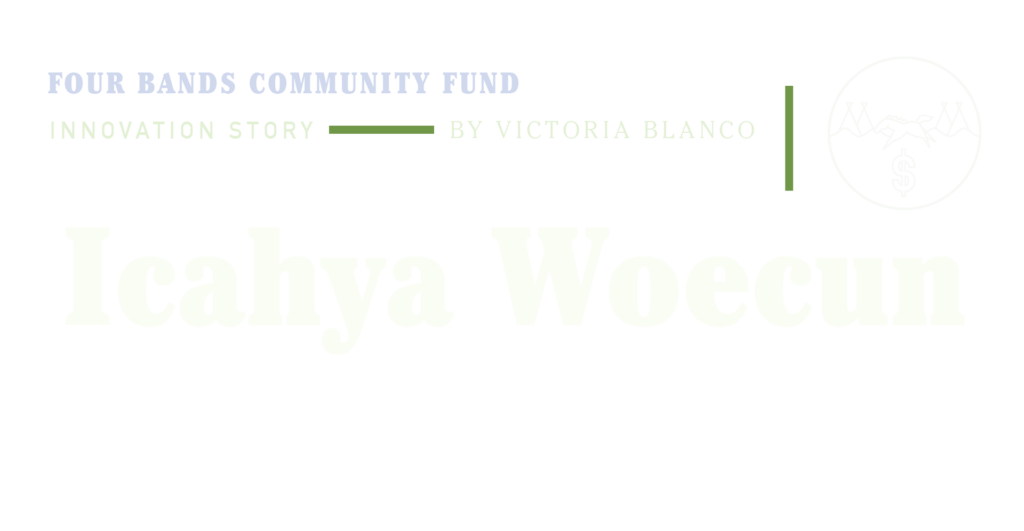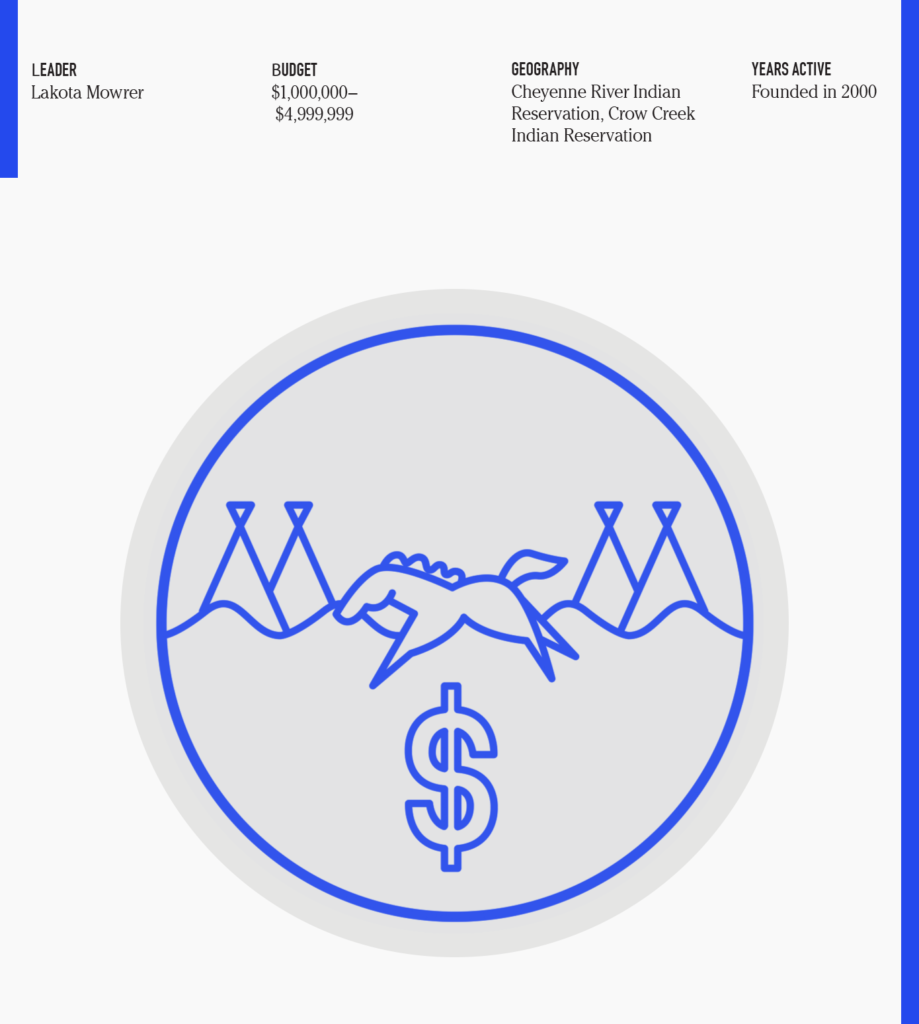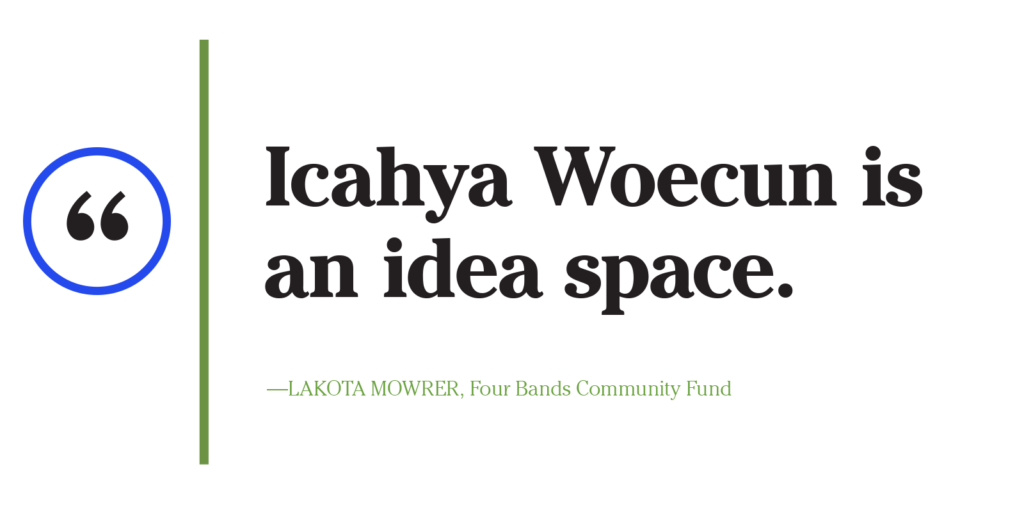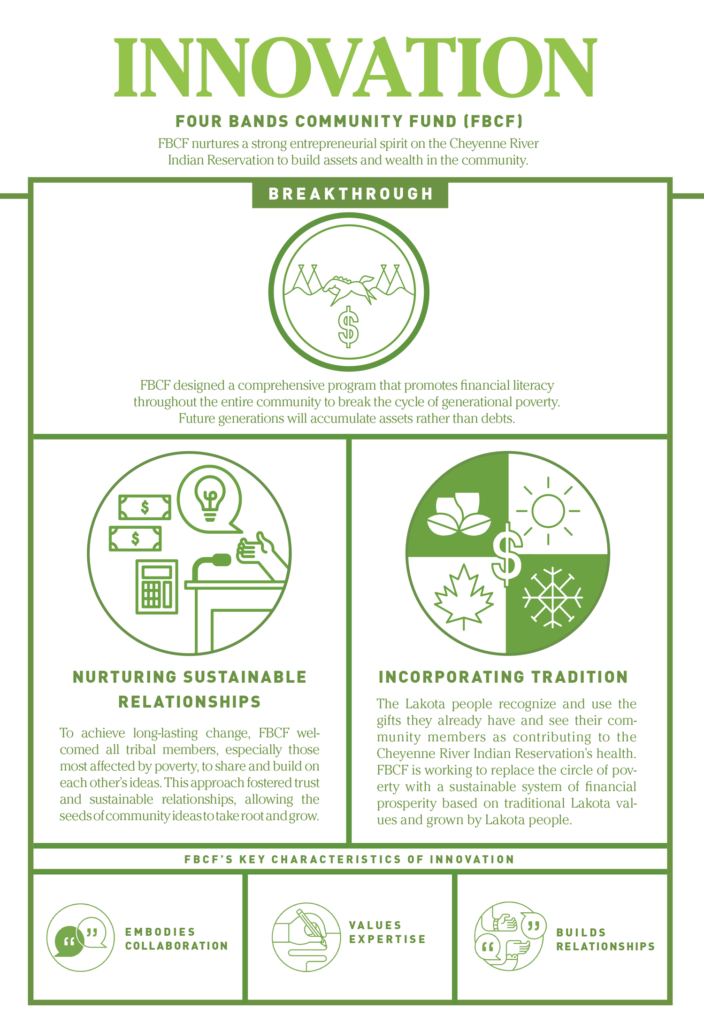
In 1998, in a living room located in the heart of the Cheyenne River Indian Reservation, tribal members gathered with a sense of purpose and determination. Some of the members of the four bands that made up the Lakota Nation—the Tiospaye, the Mnicoujou, Oohenumpa, Itazipco, and Siha Sapa—had driven more than three million acres across the reservation to share the ways poverty impacted their lives and their community. As tribal members told stories of government dependence and feeling stuck in a system, they kept returning to the fact that Lakota families had suffered poverty for generations.

Throughout that critical day, the conversation evolved from describing symptoms to trying to identify solutions. Every member present recognized the cyclical nature of poverty; many of their families had lived trapped inside for generations with no foreseeable way out. In the traditional Lakota worldview, the circle is a symbol of security and prosperity, brought to life through the cycle of the four seasons and the crops it provides. To turn the circle of poverty into a circle of prosperity, the tribal members acknowledged that they needed to gain literacy in today’s financial system. Inside the living room, the tribal members began to form a plan to combat poverty. Four Bands Community Fund (FBCF) was born of this meeting.
Late that night, the tribal members concluded that one important solution was to teach the Lakota youth to maneuver the financial system of the U.S. government. “The youth are redefining what it means to be Lakota and what it means to be financially healthy. If we can get behind their momentum and push them forward into the future leaders in this community or even this nation, it will be exciting to be a part of,” said one stakeholder.


Icahya Woecun—“the place to grow.” This traditional Lakota philosophy encompasses a cycle of four phases, reminiscent of the four seasons and the four directions. According to traditional Lakota beliefs, achieving long-lasting change requires modeling nature’s rhythms in our personal and community growth.
The tribal members wanted FBCF to embody Icahya Woecun, so it invited the whole community—local governments, community organizers, families and individuals—to share their experiences and solutions to poverty. FBCF frequently invited members of the Cheyenne River Indian Reservation to events because it wanted to hear and build on everyone’s ideas. By including all community members, especially those tribal members most impacted by poverty, FBCF created a structure in which trust nurtured sustainable relationships and ideas could grow.

Making Waves is a youth-and community-focused program that aims to end Lakota poverty by teaching the basics of financial literacy and entrepreneurship—a set of key behaviors that youth, and those who influence them, need to master and incorporate into their lives to build and support private businesses, become better stewards of money and expand assets rather than debts. FBCF serves as a mentor by encouraging students to think around systems and find creative solutions to their problems. To bring these solutions to life, Making Waves provides business classes and financial support. The community members create their own business solutions. The process of growing a program takes tweaking, so Making Waves invites students to share their opinions and contribute to the plan for combating poverty through financial literacy. In these ways, Making Waves promotes the growth of small businesses and the overall well-being of the Cheyenne River Sioux Tribe.
FBCF understands that inclusivity is the best way to combat a violent history and to continue growing. This is why it avoids the “missionary approach” in its work—“going in and telling people what they should do,” according to one stakeholder.
Instead, FBCF opens the avenues for communication, inviting the community to provide feedback through surveys distributed on the reservation and involving families, community organizations and local governments to speak their minds. Today, Making Waves continues to welcome all people—students, teachers, administrators.

Ideas begin as a seed, and it takes the effort and care of many people to give the seed the healthy environment it needs to grow. FBCF views the Lakota people as interconnected—the health of each individual depends on the health of the family, of the community. When Making Waves first began, it focused its efforts on the youth in the hopes that they would become a new generation of financially prosperous business owners. But Making Waves also saw the opportunity to spread financial literacy to elders through its youngest entrepreneurs, extending growth to the entire community. Today, the youngest entrepreneurs of Making Waves aid their elders in understanding modern business practices, from establishing credit to managing loan interest.
Lakota Mowrer, the executive director of FBCF, believes each individual is an investment in the future. “We look at our work as nation building. We have a bigger picture of growing our future leaders to impact the sustainability of the Cheyenne River Sioux Tribe.”


The results of these collaborative efforts are astonishing. Since starting Making Waves, financial literacy has increased exponentially on the Cheyenne River Indian Reservation. Businesses are growing and prospering, and the country has taken notice. Several federal and private entities, including the Consumer Financial Protection Bureau and the Johns Hopkins Center for American Indian Health, have reached out to FBCF for advice on implementing programs like Making Waves. Tanya Fiddler, the former executive director of FBCF, currently sits on the U.S. Treasury’s Community Development Advisory Board, which advises the Community Development Financial Institutions (CDFI) Fund on promoting economic development in struggling communities throughout the country. Impressively, FBCF’s success has proven important enough to replicate on a national level.

To grow in the way of Icahya Woecun means recognizing and using the gifts already given. The Lakota people embody Icahya Woecun and resourcefulness when they invest time and money in their own community members, all of whom they see as capable of contributing to the Cheyenne River Indian Reservation’s health.
Eighteen years after the first visionaries met, FBCF is closer to replacing the circle of poverty with a sustainable system of financial prosperity based on traditional Lakota values and grown by Lakota people. Icahya Woecun—the place to grow. The place to prosper, the people who prosper.
“Icahya Woecun is an idea space,” says Lakota, “and FBCF has created a space where ideas can flourish and people can learn without fear of judgment and failure.”




Produced in partnership with the Bush Foundation
to showcase the culture of innovation
behind its Bush Prize winners.
Contributors










